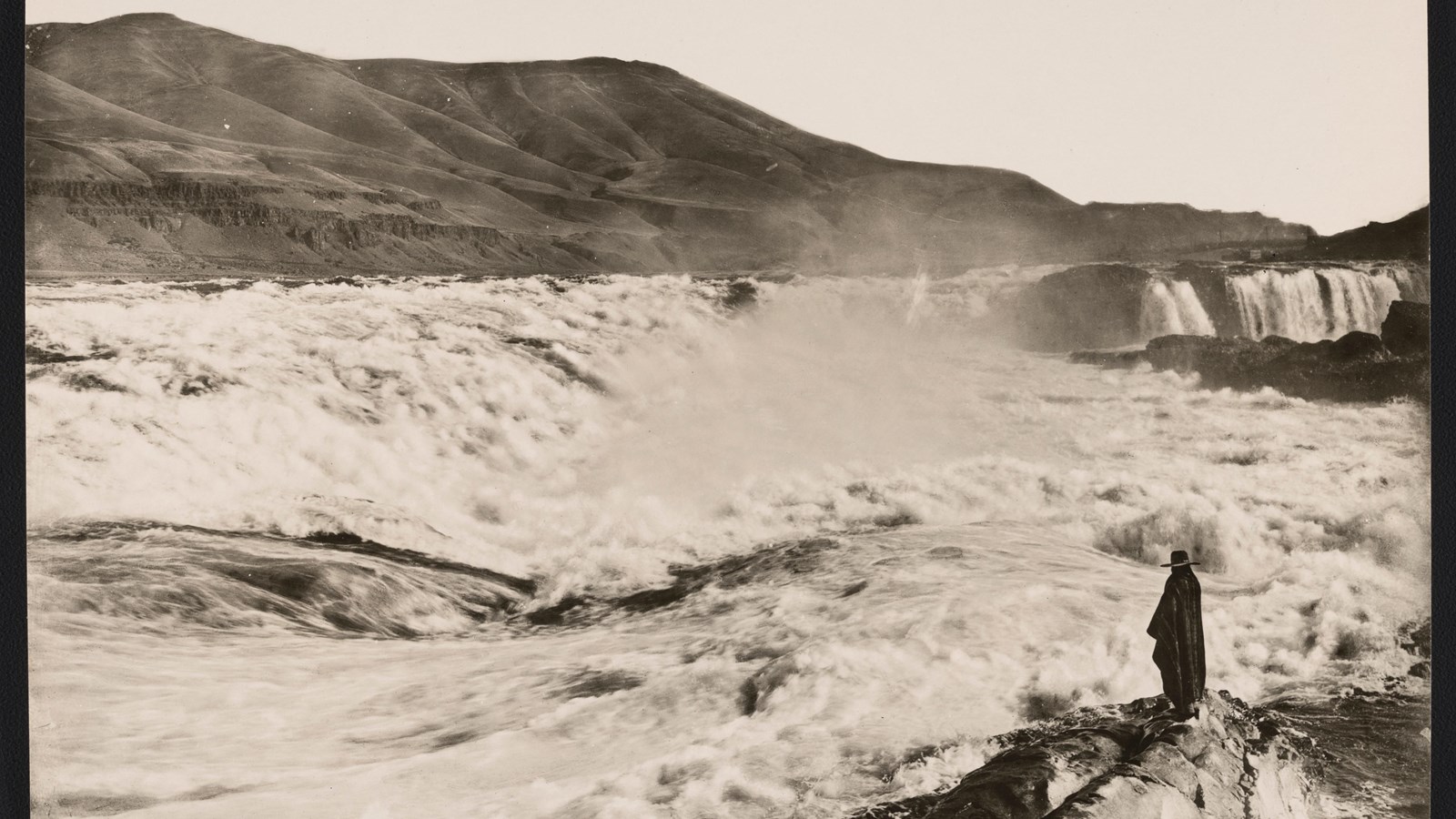Last updated: November 28, 2023
Place
Celilo Falls, Oregon

Oregon Historical Society
Boat Ramp, Dock/Pier, Historical/Interpretive Information/Exhibits, Information Kiosk/Bulletin Board, Parking - Auto, Parking - Boat Trailer, Parking - Bus/RV, Picnic Table, Playground, Scenic View/Photo Spot, Tent Campsites, Toilet - Flush, Trash/Litter Receptacles, Wheelchair Accessible
Celilo Falls and the Narrows of the Columbia River were an almost ten-mile stretch of river from the present-day Celilo Village to The Dalles. This stretch of turbulent water and rocky banks has always been an important meeting place.
People spoke many languages here. Upstream, residents of the Columbia River Plateau spoke Sahaptian languages. Downstream, people spoke Chinookan languages.
People came to trade here. The spring and fall salmon runs were the most bustling times for the communities along the rapids. Wasco-Wishram (Chinookan-speaking) people who lived here caught salmon, dried it, and pounded it into cakes, which they then wrapped in dried grass and salmon skin. They called these powdered fish cakes “killuk.” It remained edible for months.
Far-flung travelers—from Paiute people who lived in the deserts to British sailors who anchored their ships at the mouth of the Columbia—came to the falls to trade for this preserved fish. To buy the killuk, people traded what they had: horses, knives, axes, copper kettles, guns, beads, buffalo robes, cedar clothing, shells, blankets, cloth, and more—materials that had been made anywhere from the Rocky Mountains to the Great Basin to England to China. Meriwether Lewis and William Clark’s group bought hazelnuts, berries, grass mats, and lots of killuk. The dried fish cakes ended up being the only food they still had left later that year.
People came for community here. They came to see long-lost friends and celebrate the abundance of the salmon runs.
Walamottinin (Twisted Hair) and Tetoharsky led Lewis and Clark to the falls, which these Nez Perce men had probably visited many times before, and then the Nez Perce returned home. Still in need of locals to help them portage around these difficult falls, the expedition members traded goods with Wasco-Wishram people in exchange for their assistance.
Clark called the area “the Great Mart of all this Country.” He even tried to set up his own market stand in one town—“I rose early and took a position near to the village and exposed the artiles I had for Sale”—but met little success.338
Clark, Lewis, and the people with them were just another group passing through this busy marketplace.
Lewis and Clark NHT Visitor Centers and Museums
This map shows a range of features associated with the Lewis and Clark National Historic Trail, which commemorates the 1803-1806 Lewis and Clark Expedition. The trail spans a large portion of the North American continent, from the Ohio River in Pittsburgh, Pennsylvania, to the mouth of the Columbia River in Oregon and Washington. The trail is comprised of the historic route of the Lewis and Clark Expedition, an auto tour route, high potential historic sites (shown in black), visitor centers (shown in orange), and pivotal places (shown in green). These features can be selected on the map to reveal additional information. Also shown is a base map displaying state boundaries, cities, rivers, and highways. The map conveys how a significant area of the North American continent was traversed by the Lewis and Clark Expedition and indicates the many places where visitors can learn about their journey and experience the landscape through which they traveled.
